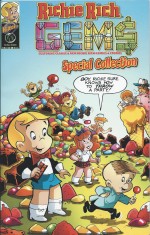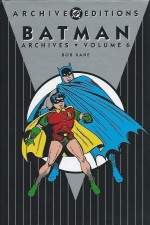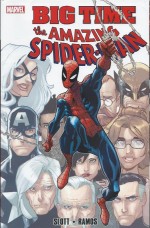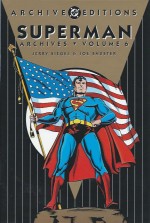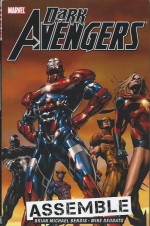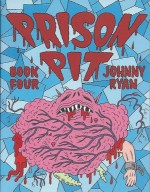
By Makoto Yukimura, translated and adapted by Yuki Nakamura & Anna Wenger (TokyoPop)
ISBN: 978-1-59182-509-8
These days nobody does gritty, authentic, fun hard-tech comics science fiction like the Japanese (although for sheer tight-lipped underplayed drama I’d still place Sydney Jordan’s Jeff Hawk, Frank Hampson’s Dan Dare and most of Warren Ellis’ SF work ahead of even Manga’s greatest masters…).
The tough, no-nonsense, gritty mystery and refined imagination of space travel – so much a component of immediate post-World War II industrial society in the West – began to once again captivate a legion of level-headed imagineers at the end of the 20th century when Japanese tales first began to be translated into English. One superb exponent of that mini-boom was relative newcomer Makoto Yukimura who rekindled interest in near-space exploration in all its harsh and grimy glory with an inspiring “nuts-and-bolts†manga series which scrupulously explored the probable rather than the possible…
Yukimura (born in Yokohamain 1976, just as the once-ambitious American space program was languishing in cash-strapped doldrums and five long years before the first space shuttle launch) began his professional life as an assistant to veteran creator Shin Morimura before launching his independent career with the Planetes.
Working exclusively for Kodansha, his award-winning premier Seinen series ran in Weekly Morning magazine from January 1999-January 2004 and was later collected as four tankÅbon volumes. The serial easily made the jump to a popular anime series and since then Yukimura, after producing SayÅnara ga Chikai node for Evening magazine, has since 2005 abandoned the future for the past and concentrated his creative energies on the monolithic historical epic Vinland Saga – serialized in Weekly ShÅnen Magazine and Afternoon – and filling 11 bloodcurdling volumes to date…
The grimly existential premise of Planetes is devilishly simply and powerfully engaging. Humanity is a questing species but cannot escape its base origins. In 2075 space travel and exploitation is practically commonplace but, as we’ve conquered the void between Earth and the asteroid belt and prepare to exploit the outer planets, the once-pristine void around us has become clotted with our obsolete tech and casually discarded rubbish.
Even the most minuscule piece of junk or debris falling through hard vacuum is a high-speed, potentially deadly missile and to keep risk to a minimum, hardy teams of rugged individualists have to literally sweep the heavens free of our discarded crap.
The stories revolve around youthful trashman Hachimaki Hoshino whose greatest dream is to become a true deep-space astronaut and famous explorer like his famous – if disreputable – father. The boy has his future all mapped out: a similar career-path to dear old dad will lead to fame and wealth and then he can buy his own spaceship and be really free…
Sadly the incessantly dull toil of his deep night day-job is wearing away at the passionate, excitable Hachi who is becoming swiftly disenchanted with the whole dreary, disgusting drudgery aboard DS-12 – a standard sanitation/cargo ship fondly dubbed Toybox…
The first episode in this stunning second volume begins with ‘Running Man’ as the Toybox’s weary crew visit Moon Orbital Space Port and the obsessively training Hachimaki is approached by an unctuous business type looking for his infamous dad. Werner Locksmith is the head and chief designer of the Earth Development Community-sponsored manned mission to Jupiter and, unknown to the starry-eyed kid, had pegged Hachi’s father as the only man capable of piloting the innovative new vessel on the five year mission: one the boy would give anything to be on.
However the elder explorer doesn’t want to go and has actually absconded from the Private/Public sector project and is currently a fugitive…
The old rogue has had enough of space-faring: a fact he finds impossible to relate to his furious son when they meet. The old spacer intends to retire to Earth and make things right with the wife he’s abandoned…
Meanwhile Locksmith has been called away. Something has gone disastrously wrong with the Jupiter ship Von Braun…
Above Luna as Hachi argues with his dad, another crisis occurs as a devastating explosion rips through the station and everybody evacuates. In the safe chill of the void, Hachi and the crew see a phenomenal debris field emanating from the moon’s surface. The Von Braun’s experimental engines have failed and an entire lunar base has been evaporated…
Following the tragedy the ruthlessly cool Locksmith unswervingly starts to rebuild and the senior Hoshino breathes a sigh of relief. Hachi is undeterred. He resumes his training, knowing that when the Von Braun is ready to fly, he will be ready to join it…
Acknowledging their comrade’s impossible dream, stoic Russian Yuri Mihairokov and commander Fee Carmichael have inducted by a raw new recruit to the Toybox team and tasked Hachi with training her to be his eventual replacement. According to the ambitious lad, however, Ai ‘Tanabe’ is a hopeless case, fruitlessly wasting valuable time he could be using to train and study for his application to the Jupiter Mission. Suffering mightily from having to baby-sit the useless girl, he only discovers her suppressed inner fire after a 50-year old space coffin is recovered from the dark expanse and provokes a bitter dispute about love, passion and man’s place in the cold, lonely universe…
Hachi’s dream comes a giant leap closer to reality in ‘A Black Flower named Sakinohaka Part 1’ as he finally begins his official audition for the Von Braun. The boy has become an emotional void with nothing but his cold ambition driving him. He can’t even process the deadly and constant threat posed by increased sabotage activity from the terrorist SDL; a group determined to keep space free of Man’s toxic presence.
Despite the more than 20,000 applicants, Hoshino is beginning to distinguish himself when a series of bomb blasts rocks the controversial project. Narrowly escaping death, Hachi is visited by his old friends who are horrified by the obsessed spacer’s blasé attitude and apparent disregard for the pain and suffering of his rival candidates who were caught in the detonations. Is he truly so determined to get on the mission that all he sees are fewer competitors?
Only fellow applicant and new buddy Hakimu seems to understand that any sacrifice and personal misery are worth the prize…
Soon the testing is in its final stages and Werner Locksmith lectures the remaining candidates from the bridge of the almost completed Von Braun. Only nine of the desperate spacers will make this final cut but the big day is again delayed after Hachi confronts the insidious saboteur and fails to stop him…
The tale resumes six months later as the last twenty three candidates await the final call whilst in ‘A Black Flower named Sakinohaka Part 2’ Hachi’s still-fugitive father is targeted by SDL assassins and heads back to the son who has disowned him. His arrival coincides with young Tanabe’s visit to deliver the boy’s belongings from Toybox, leading to an embarrassing confusion as to her amatory status, but before things can be fully clarified the terrorists attack again, determined to ensure the death of the “only man who could pilot the Von Braunâ€â€¦
Fleeing through the lowest levels of the Moon’s Oriental Basin Underground Tunnel City the trio are more of a danger to each other than their murderous pursuers and after another catastrophic explosion Hachi again confronts the traitor who sabotaged his last attempt to join the mission and almost commits an unpardonable act until gentle Tanabe talks him off the emotionally-charged metaphorical ledge…
‘Lost Souls’ sees the lad successfully in final training for the mission that has become his life when a lunar accident strands Hachi and new comrade Leonov on the unforgiving surface with only hours of oxygen and a 40 kilometre walk to the nearest relief station. It would have been impossible even if the co-pilot wasn’t wounded with a slowly-leaking suit.
By the time rescue arrived Hachi had reached the stage where he fought his saviours, frantic to prove that he truly needs no one’s help to achieve his goals…
This sublime saga concludes here with ‘СПÐСИБО’ (or “Spasibo†which can be either “thank you†or “God save youâ€) as the recuperating Hachi returns to the family home in Japan, accompanied by his penitent father, and is visited by Leonov’s grateful mother. Although he doesn’t understand a word she says, the old lady still makes far more sense than his constantly warring family and, after another drunken fight with his dad, events come to tragic, galvanising crisis which at last crushes the walls around the traumatised young man’s head and heart…
Also included are working sketches, pin-ups, a bunch of four-panel sidebar humour strips ‘A Four Panel Comic’, ‘Namao-san (Presumably Male)’, ‘Eat? That Thing?’, ‘Drinking Hot Coffee through a Straw’ and prose biographies of revered and inspirational author Kenji Miyazawa and pioneer Cosmonaut Yuri Alexeyevitch Gagarin in ‘Conceptualising Space Travel’.
Suspenseful, funny, thrilling and utterly absorbing, these tales readily reinvigorate and reinvent the magical allure of the Wild Black Yonder for newer generations, and this authentic, hard-edged and wittily evocative epic is a treat no hard-headed dreamer with head firmly in the clouds can afford to miss…
This book is printed in the traditional Japanese right to left, back to front format.
© 2001 Makoto Yukimura. All rights reserved. English text © 2004 TOKYOPOP Inc.

